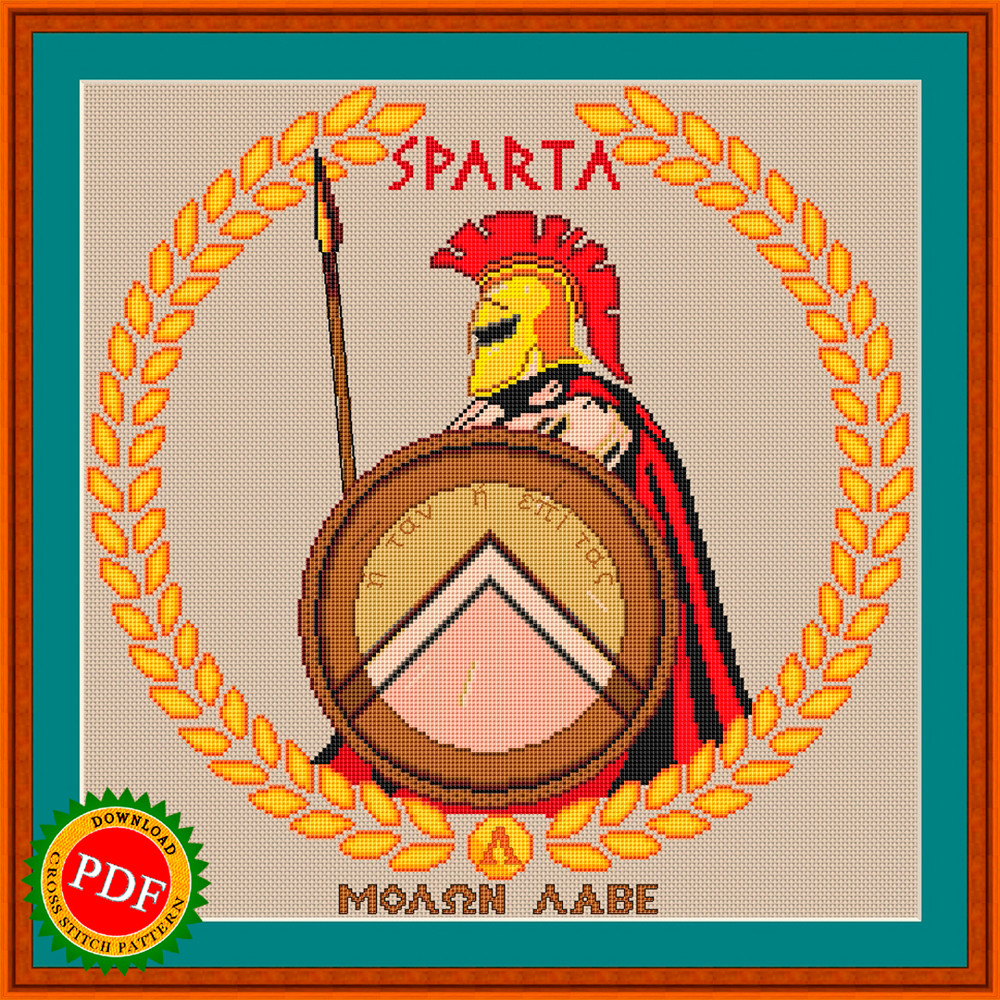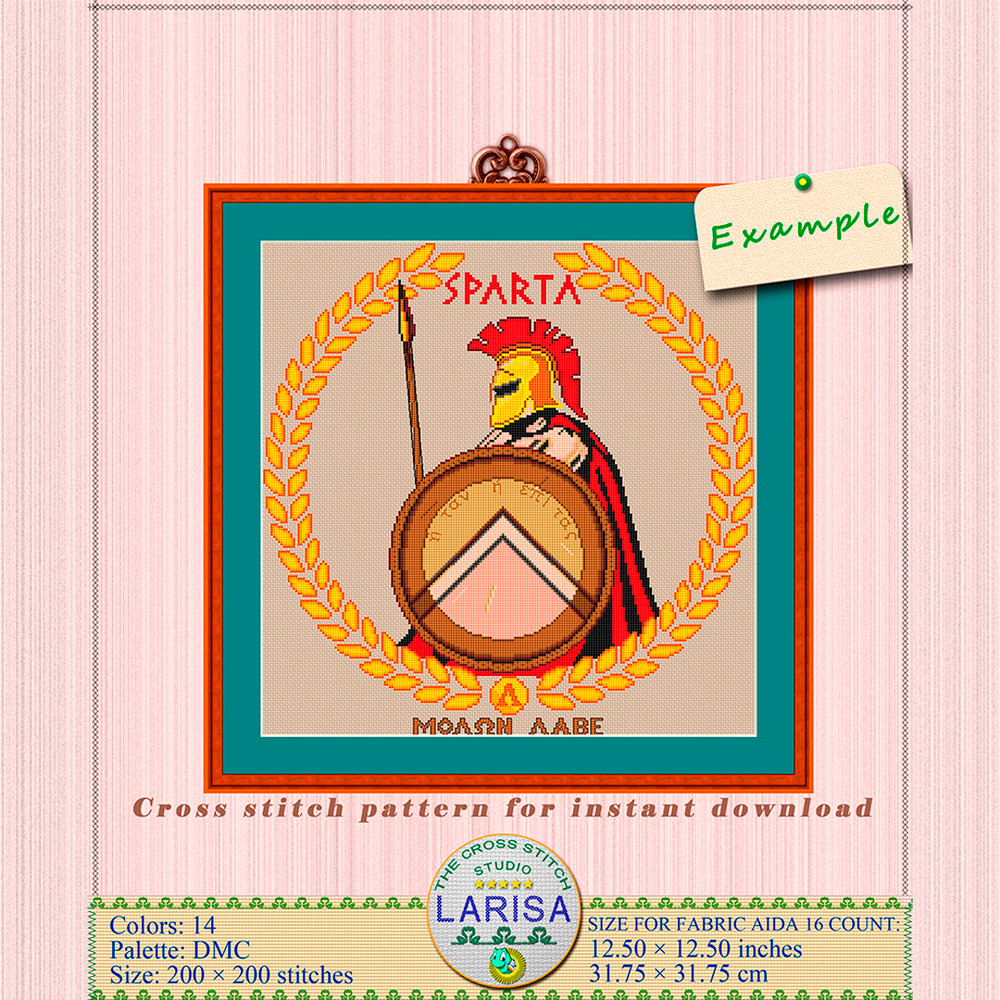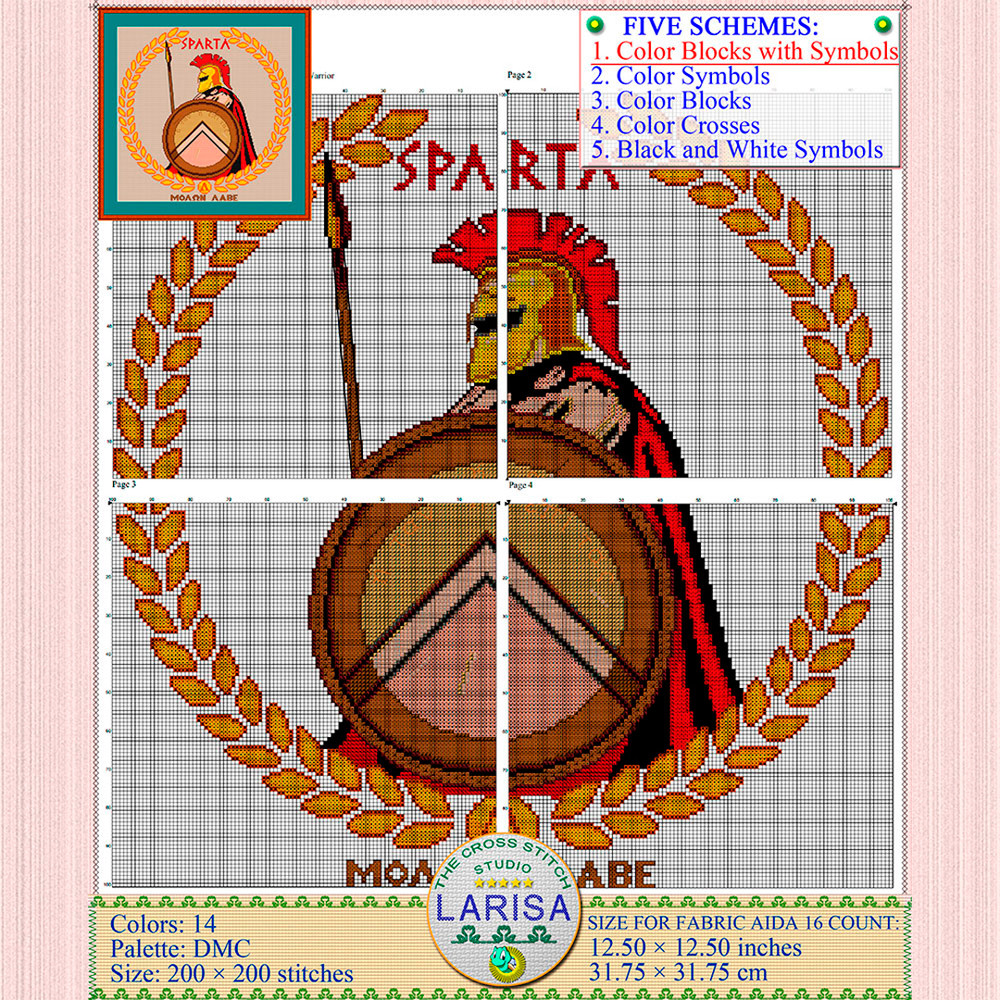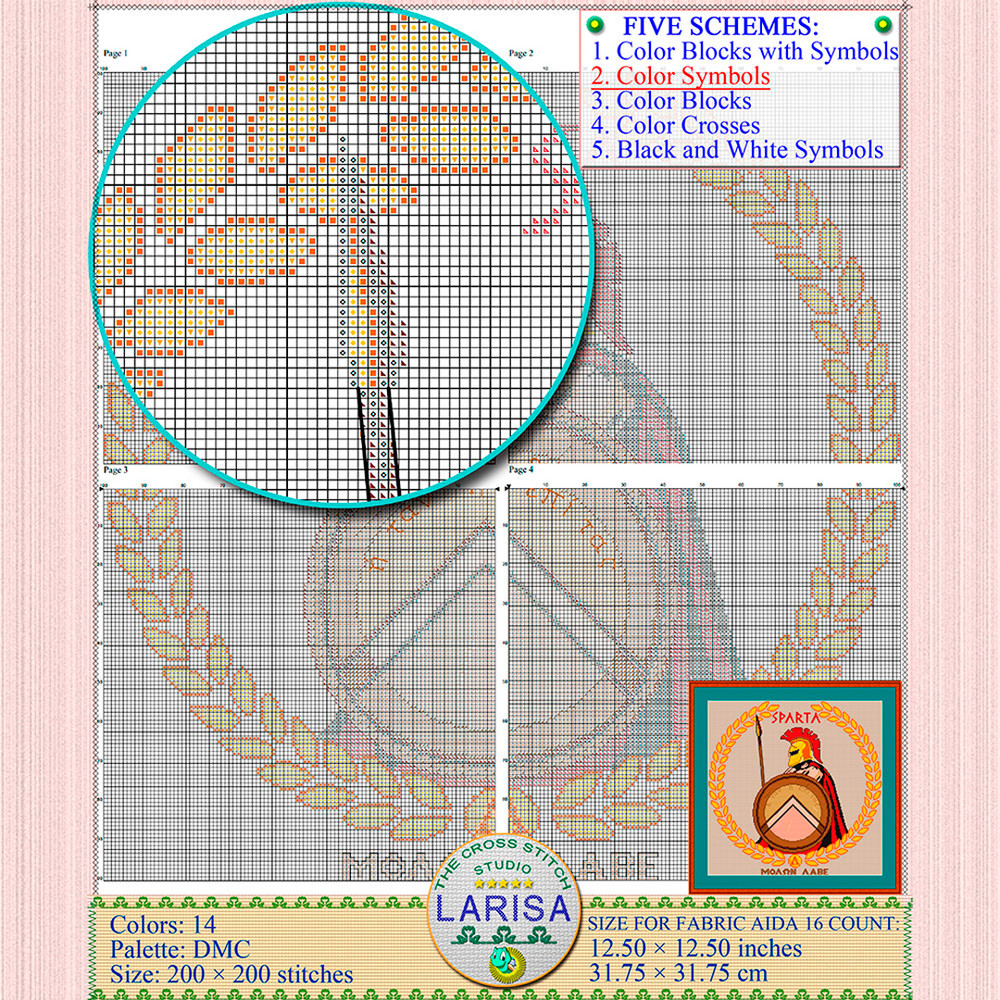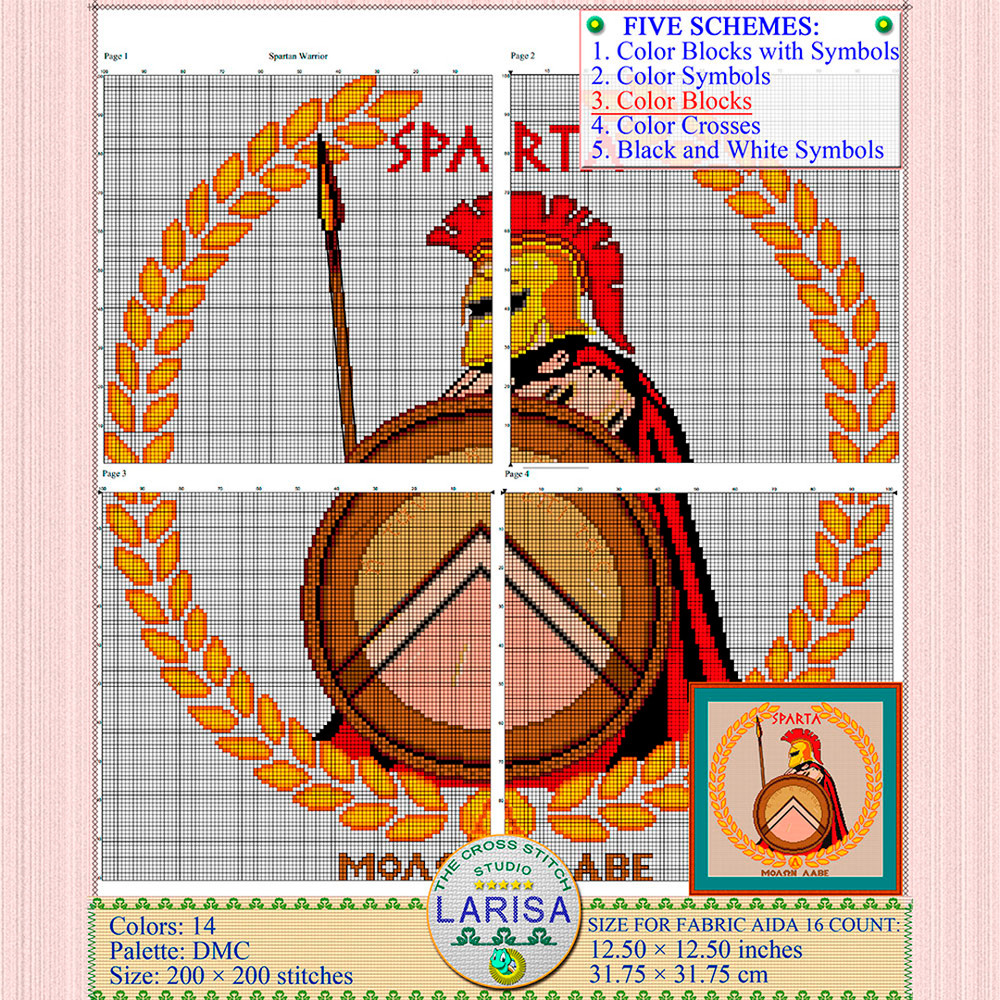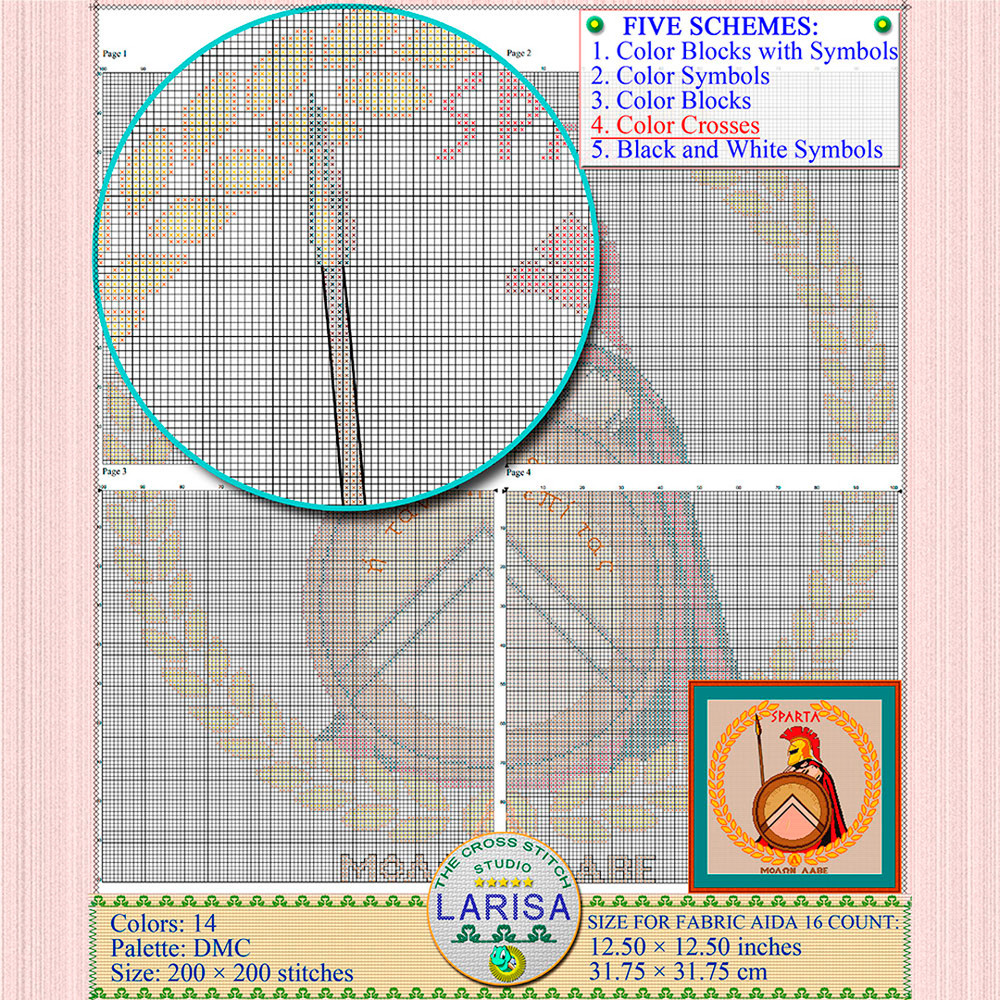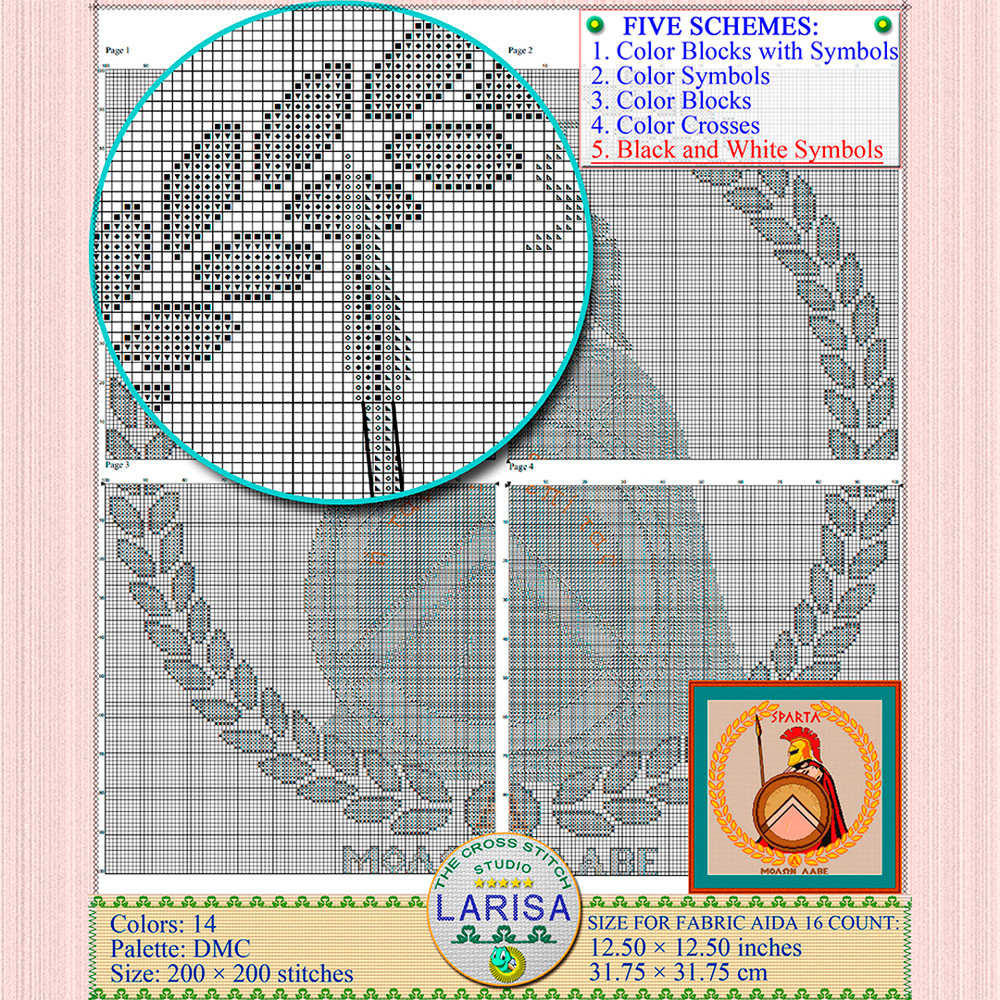Spartan Cross Stitch Pattern | Spartan Warrior
Spartan Cross Stitch Pattern
🔎 Spartan Warrior | Lacedaemonian | MOLON LABE: printable cross stitch, cross stitch pattern, PDF pattern, printable PDF pattern.
🔔 Only digital format.
🔎 The pattern comes in .PDF format.
★ Pattern specification for different types of fabric.
• Fabric: Aida.
• Colors: 14. Palette: DMC.
• Size: 200 × 200 stitches.
• Finished size will vary depending on the count fabric/canvas you choose.
✔ 14 count ⇒ Size: 14.29 × 14.29 inches | 36.30 × 36.30 cm
✔ 16 count ⇒ Size: 12.50 × 12.50 inches | 31.75 × 31.75 cm
✔ 18 count ⇒ Size: 11.11 × 11.11 inches | 28.22 × 28.22 cm
💾 5 PDF includes:
1. FIVE SCHEMES (Fabric: 16 count Cream Aida):
• Color Blocks with Symbols.
• Color Symbols.
• Color Blocks.
• Color Crosses.
• Black and White Symbols.
2. Color photo for reference.
3. List of DMC thread colors (instruction and key section).
🔔 Please note this is a digital pattern only! No fabric, floss, or other materials are included in the listing.
⛔ Returns & exchanges. This is a digital product and I don’t accept returns, exchanges, or cancellations.
❤ Feel free to contact me if you have any further questions.
❋❋❋❋❋❋❋❋❋❋
✎ Reference Information.
🔎 Sparta was a prominent city-state in ancient Greece. In antiquity, the city-state was known as Lacedaemon, while the name Sparta referred to its main settlement on the banks of the Eurotas River in Laconia, in south-eastern Peloponnese. Around 650 BC, it rose to become the dominant military land-power in ancient Greece.
🔎 From a young age, male Spartiates were trained for battle and put through grueling challenges intended to craft them into fearless warriors. In battle, they had the reputation of being the best soldiers in Greece, and the strength of Sparta’s hoplite forces let the city become the dominant state in Greece throughout much of the Classical period. Other city-states were reluctant to attack Sparta even though it could muster a force of only about 8000 Spartiates during the zenith of its dominance, such was the reputation of its soldiers.
🔎 The Spartan army stood at the center of the Spartan state, citizens trained in the disciplines and honor of a warrior society. Subject to military drill from early manhood, the Spartans became one of the most feared military forces in the Greek world. At the height of Sparta’s power - between the 6th and 4th centuries BC – it was commonly accepted by other Greeks that “one Spartan was worth several men of any other state”.
🔎 Thucydides reports that when a Spartan man went to war, his wife (or another woman of some significance) would customarily present him with his hoplon (shield) and say: “With this, or upon this” (Ἢ τὰν ἢ ἐπὶ τᾶς, Èi tàn èi èpì tàs), meaning that true Spartans could only return to Sparta either victorious (with their shield in hand) or dead (carried upon it).
🔎 Molon labe (Ancient Greek: μολὼν λαβέ), meaning “come and take [them]“, is a classical expression of defiance. According to Plutarch, Xerxes I—king of the Achaemenid Empire—demanded that the Spartans surrender their weapons and King Leonidas I responded with this phrase.
🔎 Sparta was subject of considerable admiration in its day, even in rival Athens. In ancient times “Many of the noblest and best of the Athenians always considered the Spartan state nearly as an ideal theory realised in practice.” Many Greek philosophers, especially Platonists, would often describe Sparta as an ideal state, strong, brave, and free from the corruptions of commerce and money.
